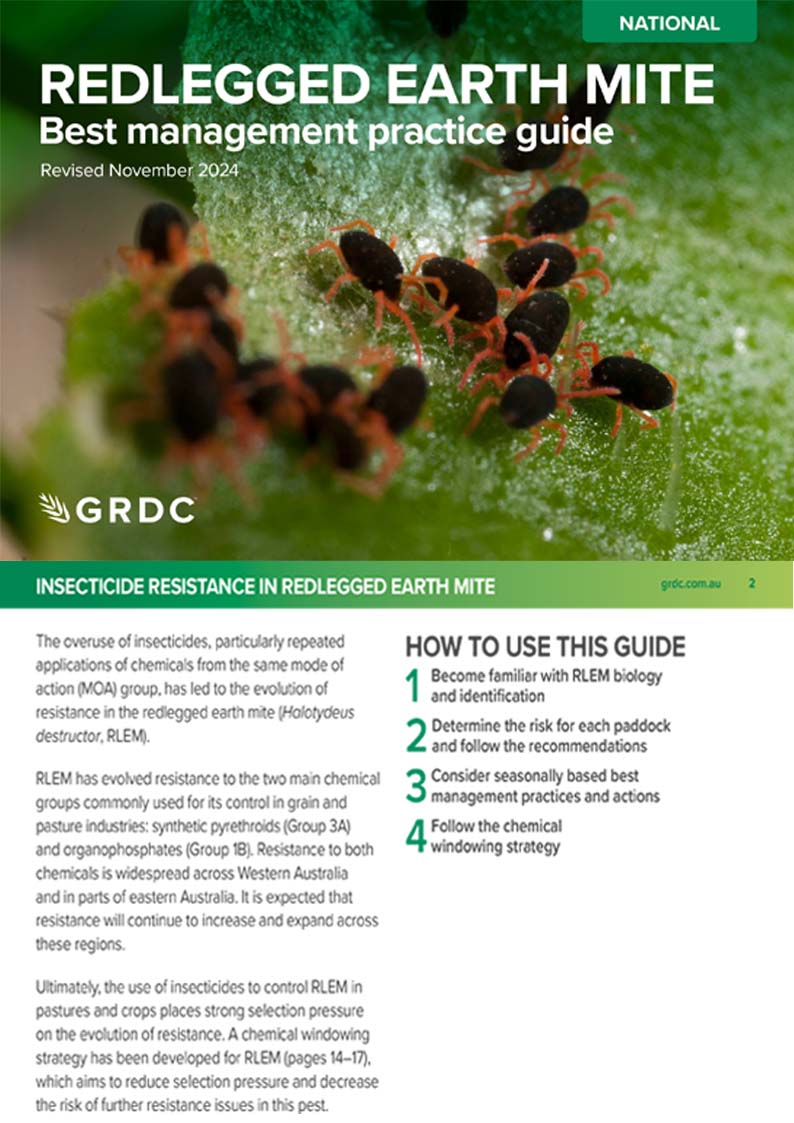Redlegged earth mite best management practice guide
Redlegged earth mite best management practice guide
Published: 14 Nov 2024
Redlegged earth mite (RLEM) has developed resistance to the two main chemical groups that are commonly used to control it. This guide provides details of a chemical windrowing approach that can improve effectiveness of chemicals even where RLEM resistance to both synthetic pyrethroids (Group 3A) and organophosphates (Group 1B).
Key points
- RLEM is a major pest of pastures and grain crops.
- RLEM is very harmful to seedlings. It’s usually most damaging to canola and emerging annual pastures.
- RLEM is usually active from late April until early November. Autumn rainfall and cool temperatures cause eggs to hatch.
- An adult is about 1mm long, with a velvety black body and eight orange-red coloured legs.
- It has developed resistance to the two main chemical groups commonly used for its control.
- Resistance to these chemicals is common across Western Australia and parts of eastern Australia.
- Advice on reducing the risk of further resistance is in the fact sheet.
Want a printed copy?
Printed copies of some publications are available for growers, advisers and farming systems groups, for personal use and distribution at GRDC events.
Contact GroundCover Direct on 1800 11 00 44 or email ground-cover-direct@canprint.com.au to request copies. Publications are free but postage and handling costs may apply.
Download PDF
Region: National
GRDC Project Code: CES2010-001RTX,

